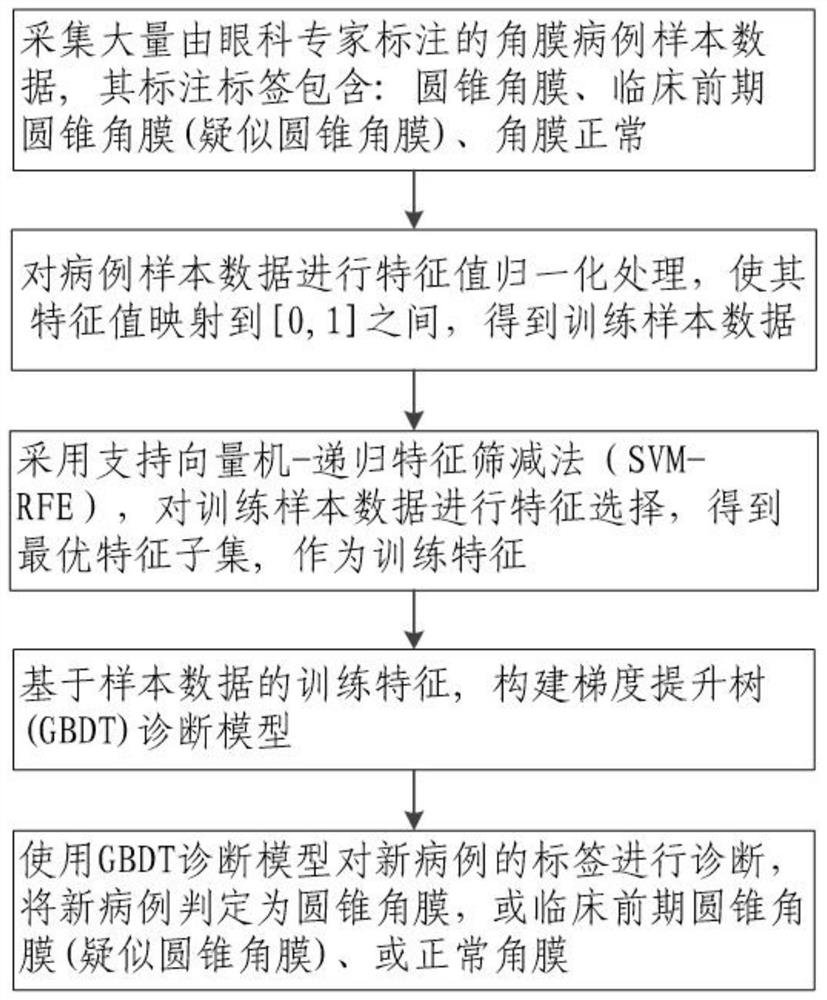A Machine Learning-Based Method for Diagnosing Keratoconus Cases
A keratoconus and machine learning technology, applied in the field of machine learning and diagnosis of keratoconus cases based on machine learning, can solve problems such as difficulty and increase in early diagnosis of keratoconus, and achieve the effect of improving efficiency
- Summary
- Abstract
- Description
- Claims
- Application Information
AI Technical Summary
Problems solved by technology
Method used
Image
Examples
Embodiment Construction
[0022] In order to make the objects, technical solutions, and innovations of the present invention more clear, the technical solutions in the embodiments of the present invention will be described in contemplation in the accompanying drawings of the present invention. Obviously, the described embodiments are the embodiments of the present invention, not all of the embodiments. Based on the embodiments of the present invention, there are all other embodiments obtained without making creative labor without making creative labor premises.
[0023] figure 1 Method of method for diagnosing a conical corneal case in the present invention. The method includes the following steps:
[0024] Step 1: Collect a large number of corneal case samples marked by ophthalmologists, and labels include: conical cornea, clinical cone cornea (suspected tapered cornea), normal cornea.
[0025] Step 2: The species data is normalized to the case sample data, so that the characteristic value is mapped to [...
PUM
 Login to View More
Login to View More Abstract
Description
Claims
Application Information
 Login to View More
Login to View More - R&D
- Intellectual Property
- Life Sciences
- Materials
- Tech Scout
- Unparalleled Data Quality
- Higher Quality Content
- 60% Fewer Hallucinations
Browse by: Latest US Patents, China's latest patents, Technical Efficacy Thesaurus, Application Domain, Technology Topic, Popular Technical Reports.
© 2025 PatSnap. All rights reserved.Legal|Privacy policy|Modern Slavery Act Transparency Statement|Sitemap|About US| Contact US: help@patsnap.com



